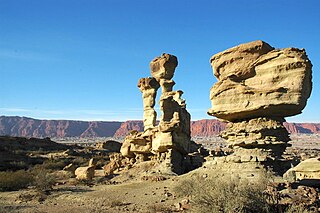
San Juan Province is a province of Argentina, located in the western part of the country. Neighbouring provinces are, moving clockwise from the north, La Rioja, San Luis and Mendoza. It borders with Chile to the west.

Cuyo is the wine-producing, mountainous region of central-west Argentina. Historically it comprised the provinces of San Juan, San Luis and Mendoza. The modern New Cuyo includes both Cuyo proper and the province of La Rioja. New Cuyo is a political and economic macroregion, but culturally La Rioja is part of the North-West rather than of Cuyo.

The National University of San Juan is a public university in Argentina. Its seat is located in the city of San Juan, capital of the province of the same name, in the Cuyo region. It was founded in 1973, based on several local institutions and a faculty of the National University of Cuyo.

Sarmiento is a department located in the south west of San Juan Province in Argentina.

Santa Lucía is a central department of San Juan Province in Argentina.

Caucete is a department in the eastern part of the San Juan Province of Argentina, which is predominantly a landscape of mountains, and many plantations. It contains the popular Shrine of the Difunta Correa.

Nueve de Julio is a department of Argentina, located in the south-center of the province of San Juan. Lying within the Tulum Valley agricultural oasis, almost 80% of the department's area is cultivated; it is known in particular for its production of wine and its fruit and vegetable crops.
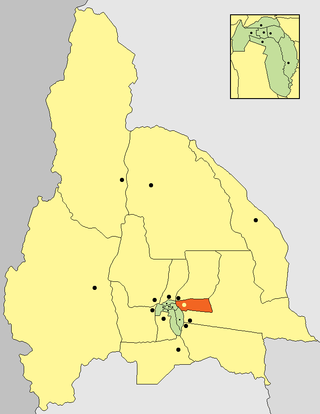
San Martín is a department in the east of San Juan province (Argentina). It is predominantly a landscape of mountains in the east and significant production wine, with the installation of prestigious wineries with a remarkable track record in the province known nationally by the development of wine table and fine wine.
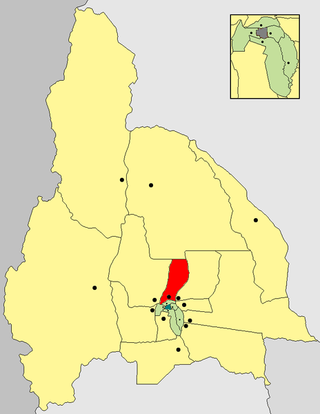
Albardón is a department of the San Juan Province (Argentina). It is located in the center south of the same, which emphasizes a desert landscape with mountains and numerous plantations, highlighting the presence of prestigious wineries known nationally.

Jáchal is a department of the province of San Juan (Argentina). It is located north of the same by making, characterized by its first level agricultural production, which emphasizes the planting of onion. The city is also known as the cradle of tradition.

Calingasta is a department of the province of San Juan (Argentina). It is the southwestern corner of the province, which is predominantly a landscape of mountains and rivers. It is characterized by its production of apples and by tourism, mainly in the tourist towns of Barreal and Tamberías

Chimbas is a department of the province of San Juan, Argentina. It is located on the south bank of the San Juan River, and is part of greater San Juan. The department is thoroughly urbanized and industrial.
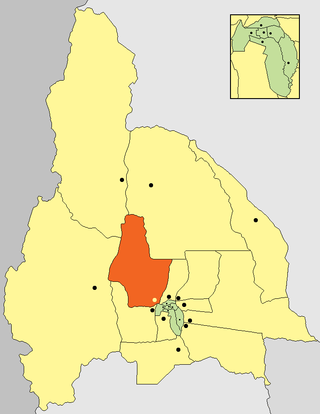
Ullum is a department of the Argentinean province of San Juan. It is located in the center of the province and its landscape is dominated by mountains and low vegetation. Its seat is Villa Ibáñez. It is also characterized by the production of grapes and fruit. The San Juan River is dammed by the Ullum Dam.

Estadio Ingeniero Hilario Sánchez is a football stadium in the city of San Juan in Argentina. It is owned and operated by C.A. San Martín. With a capacity of 26,500 spectators, it is the second biggest stadium in San Juan Province after Estadio del Bicentenario.
Estadio San Juan del Bicentenario is a football stadium located in the Pocito Department of San Juan Province, Argentina. Owned by the Government of San Juan Province, it currently hosts the home matches of local clubs San Martín, Sportivo Desamparados, and others. The stadium also served as venue for the 2011 Copa América. Estadio San Juan del Bicentenario was designed with a capacity of 25,000 spectators and required an investment of AR$86 million.
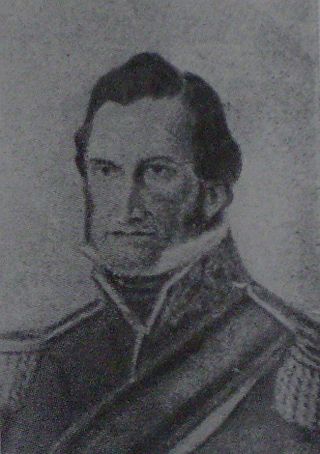
Pablo Lucero was an Argentine soldier, a leader of the Federalist Party, and governor of San Luis Province throughout the 1840s.
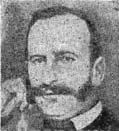
Francisco Domingo Díaz Oro was a colonel in the army of the Argentinian Confederation. He fought at the Battle of Angaco and was twice governor of San Juan Province, Argentina. He was a member of the Federalist Party but his administration was largely influenced by the Unitarian Party. His son Ramón Díaz was an outstanding lawman in La Rioja Province.
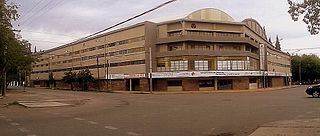
The Estadio Aldo Cantoni is an indoor arena located in the city of San Juan, capital of San Juan Province. It is mainly use by UPCN Vóley Club and Obras Pocito for its home matches for the Serie A1, the top level of the Argentine men's volleyball league system. UPCN Vóley Club won the national league for six consecutive years, from 2010-11 to 2015-16 season.
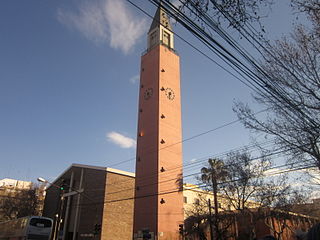
San Juan Cathedral, dedicated to Saint John the Baptist, is a cathedral and parish of the Roman Catholic Church in San Juan, Argentina. It is the seat of the metropolitan bishop of the Roman Catholic Archdiocese of San Juan de Cuyo.


















